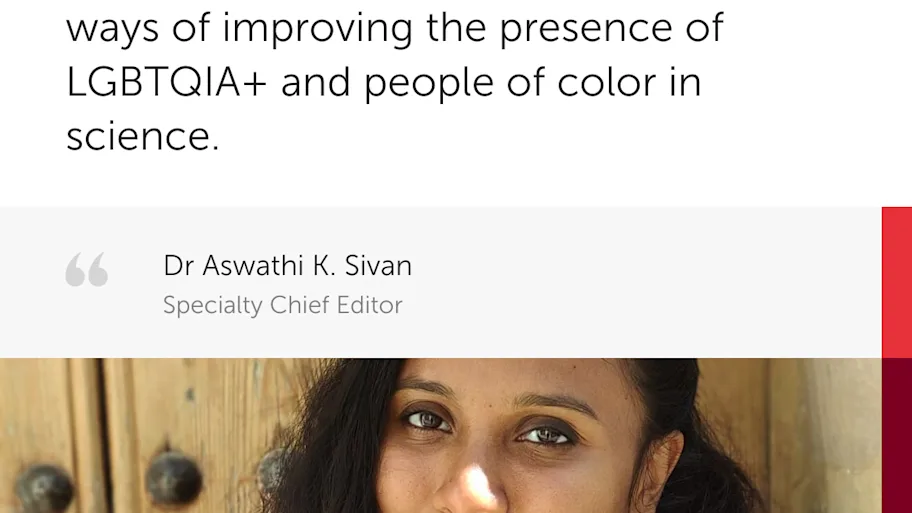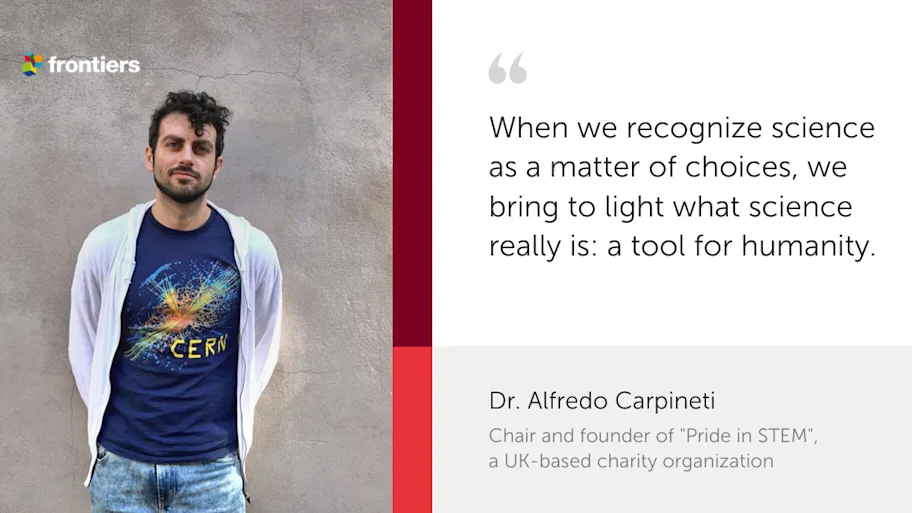
- Science News
- Featured news
- Current diversity and inclusion efforts in STEM still undermine minority groups
Current diversity and inclusion efforts in STEM still undermine minority groups
By Dr Karina Judd and Dr Merryn McKinnon, Australian National University

Image: ReeldealHD on Offset/Shutterstock.com
Dr Karina Judd is a doctoral researcher in science communication at the Australian National University. She is interested in the science-society interface with her current work focusing on inclusion, diversity and equity strategies in STEM workplaces. Dr Merryn McKinnon is a senior lecturer in science communication at the Australian National University. Her work explores the relationships between science, media, and publics; and the influence of equity, inclusion and intersectionality in STEM, especially STEM communication. Together, they have published a paper in Frontiers in Communications about how diversity and inclusion within science communication research and practice is created and implemented.
Within the last five years, within Australia at least, there has been an increased focus on equity in science, technology, engineering and mathematics (STEM) fields. As two women in STEM ourselves, this was something we felt we should contribute to. But the contributions we have ended up making were not those we originally intended.
Merryn started out in marine science and then moved into various science communication roles. Throughout her studies, classes and lecturers were usually a fairly even mix of genders and once in the workforce, this sense of parity continued.
Karina’s experiences in geology were markedly different. Moving between different subdisciplines of geoscience, then later into science communication, she noticed variations between different environments - sometimes being the only young woman in the room (or conference), other times being in a workplace surrounded by people that looked and thought like her.
In research talking to other women (female and female-identifying participants) from all disciplines and career stages about their experiences, Merryn and her colleague, Dr Christine O’Connell, found the challenges women face around the world are remarkably – and horribly – consistent. The same biases and stereotypes transcend cultural and geographical boundaries. But it is only once you start to look at where these boundaries are, and how different identities overlap, that you can begin to see that some people experience even more biases and prejudicial stereotypes, and these compound their disadvantage.

Dr Merryn McKinnon. Image: Merryn McKinnon
For example, while we (Karina and Merryn) experienced science very differently due to the cultural differences of our disciplines, we are also both white, middle class, cisgendered, women. Both of us have friends and colleagues of different cultural backgrounds, gender orientations, sexual preferences and with chronic illnesses or disabilities, and their experiences have been different, and more challenging to navigate, than ours.
This compounding effect of different parts of one’s identity – coined by Kimberle Crenshaw as intersectionality – is complex to measure, understand and ultimately address in equity and diversity initiatives. Yet within STEM disciplines, including our own of science communication, there are increasing calls for more inclusive practice and to address the intersectional issues which prevent the full participation of the communities we serve.

Dr Karina Judd. Image: Karina Judd
Changing gears
How, then, do we know what works? What is effective practice and what does it look like? How can we identify success? There doesn’t appear to be much in the literature which addresses these questions. The simple truth is evaluation of science engagement programs designed to increase equity and diversity tends to be superficial, if it is done at all.
We have a basic understanding that many equity and diversity programs focus on girls and women in STEM. There are some programs that do address other aspects of identity such as cultural or socioeconomic background, but these seem to be rarer. Overall, we don’t appear to have any sizeable collection of evidence of what works, for whom, or why.
Our contribution to the research topic of evidence-based science communication wanted to address this gap. A systematic map of inclusion, equity and diversity in science communication research: Do we practice what we preach?, published in Frontiers in Communication, takes a critical and systematic look at how science communicators define and implement diversity and inclusion in their research and practice.
Science communication can occur within a range of places and spaces, so we took the broadest definition encompassing as many types of science communication as we could - from science education to STEM career development to public engagement in science and more. We looked at academic literature including original research, commentaries, and reviews. Of various hurdles that a paper had to clear to make it into our dataset, the most important to us was whether the authors were intentional in considering inclusion, diversity and/or equity.
We found more papers that described what practitioners or academics were trying to do for historically excluded communities, rather than reflexive and collaborative practice to figure out what works with these same communities
Karina Judd and Merryn McKinnon
Who are you ‘doing diversity’ for?
Did we find more papers than we expected? Yes. Did we find huge gaps in the literature? Also yes.
Encouragingly, we found that literature regarding inclusion in science communication has been rapidly gaining pace over the last few years, likely spurred on by a number of key events including a recent Research Topic in Frontiers in Communication and Frontiers in Environmental Science. However, the body of work is highly disconnected, with most journals represented in our sample only publishing a single paper about inclusion, diversity and/or equity within our 40 year boundary.
While science education (in schools or universities, for example) literature has good examples of reflective work in an effort to understand and increase the diversity of their student base, the same isn’t necessarily true for other types of science engagement. In particular, we found more papers that described what practitioners or academics were trying to do for historically excluded communities, rather than reflexive and collaborative practice to figure out what works with these same communities.
We found that single demographics or identity characteristics - such as gender, ethnicity or race, first language, or income level - were the focus of many papers. Echoing others’ calls for increased intersectionality in this area of research, we argue that this limited scope of study does a disservice to science communication audiences.
Understanding and characterizing science communication audiences more holistically will take additional resources. The investment of these resources however has good potential to create stronger, more meaningful, and lasting connections with parts of the community that we have historically neglected, and create better outcomes for audiences, practitioners, institutions and funders.
If you have recently published a research paper with Frontiers and would like to write an editorial about your research, get in touch with the Science Communications team at press@frontiersin.org with ‘guest editorial’ in your subject line.






